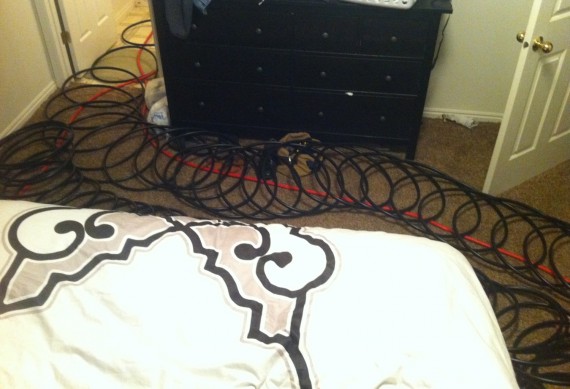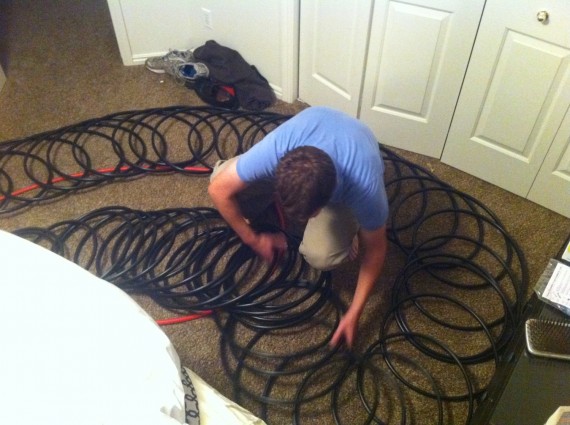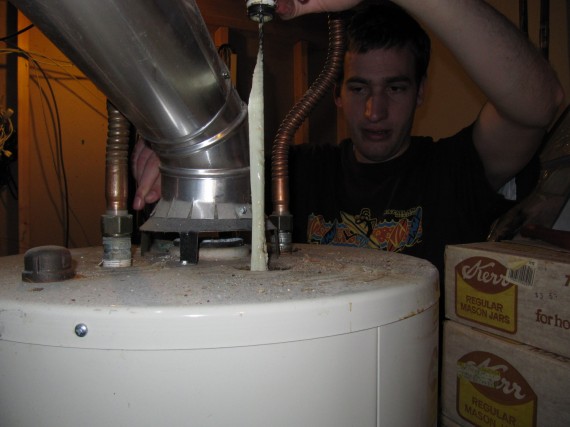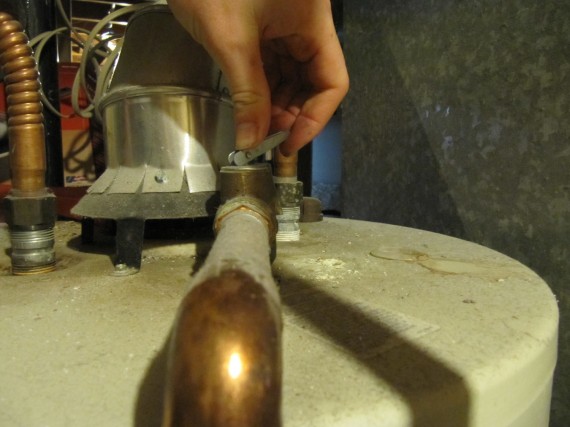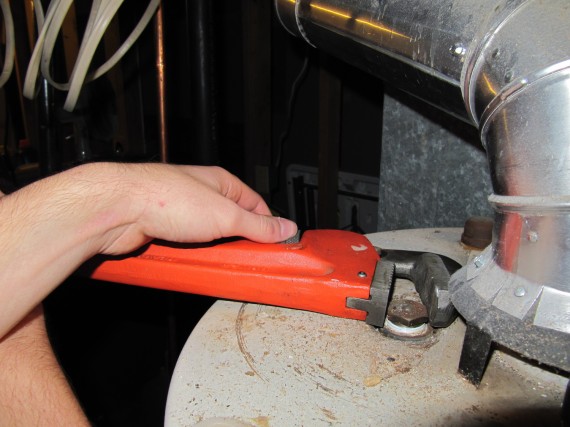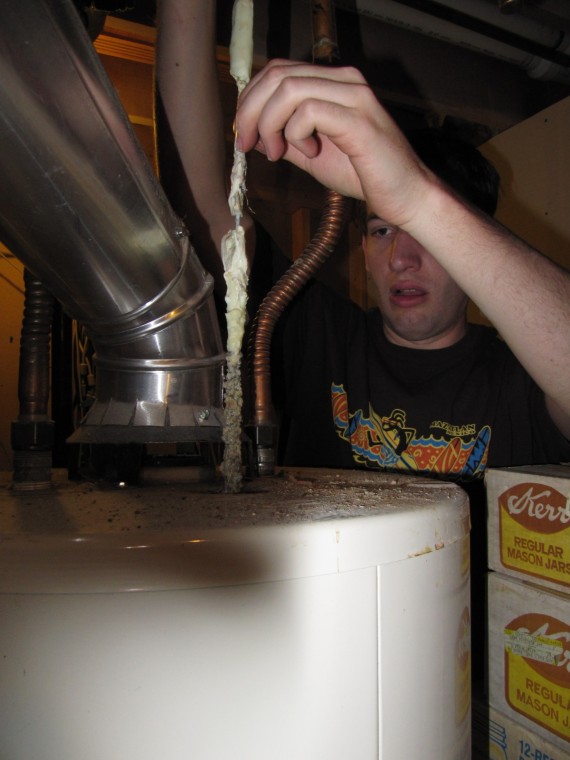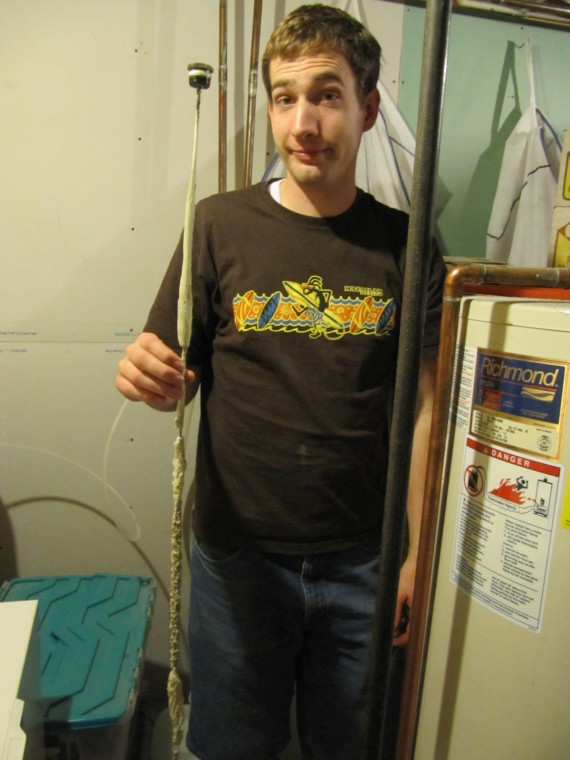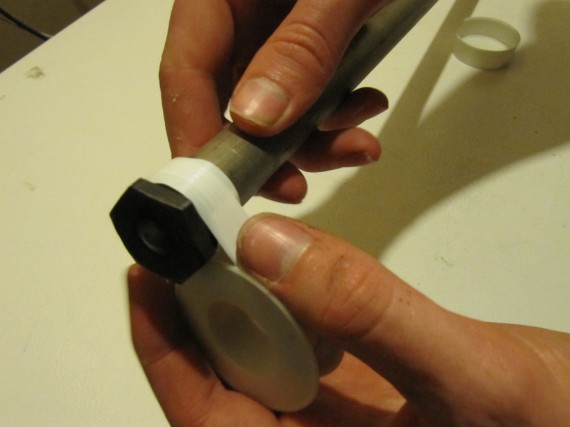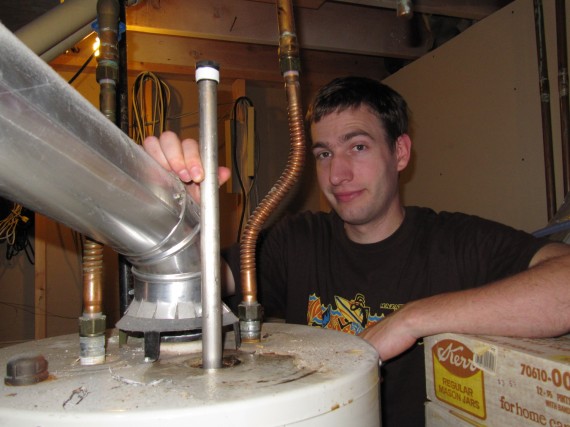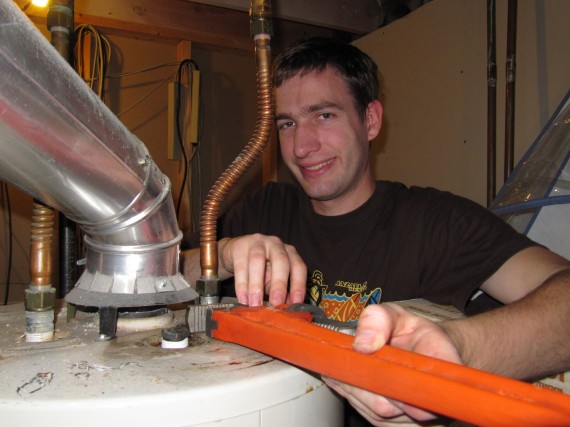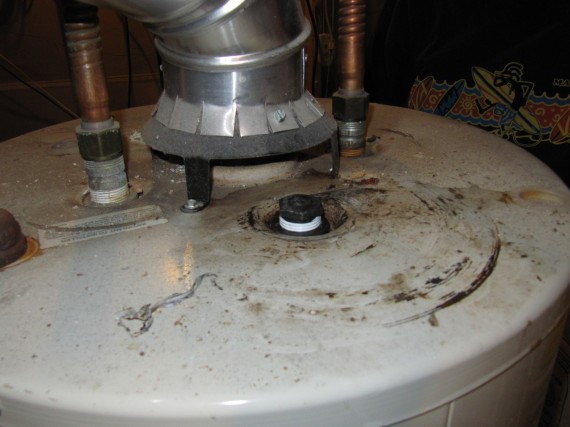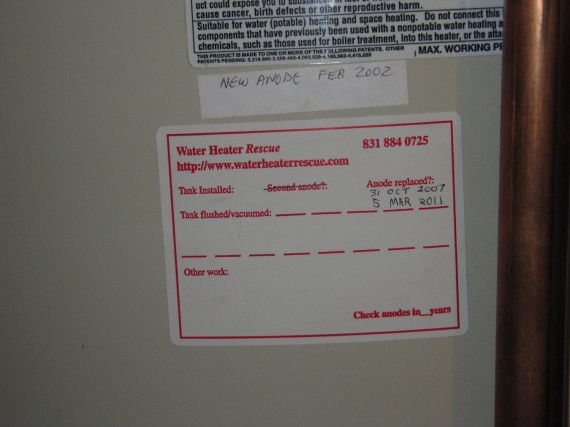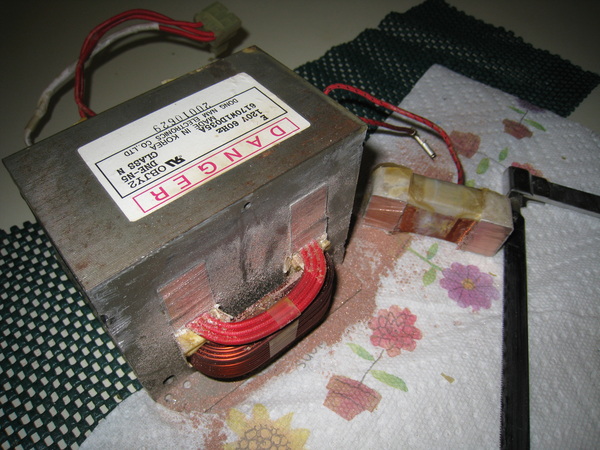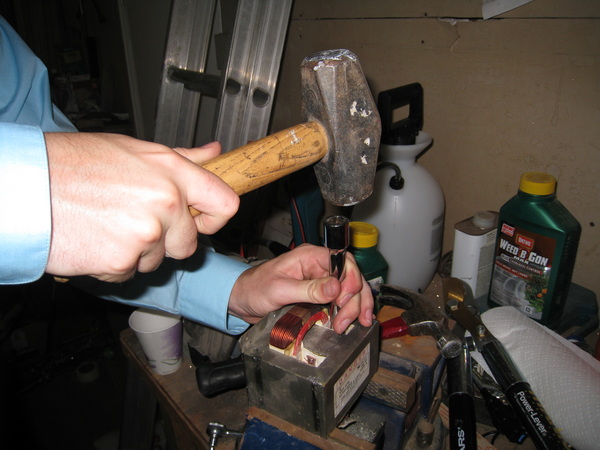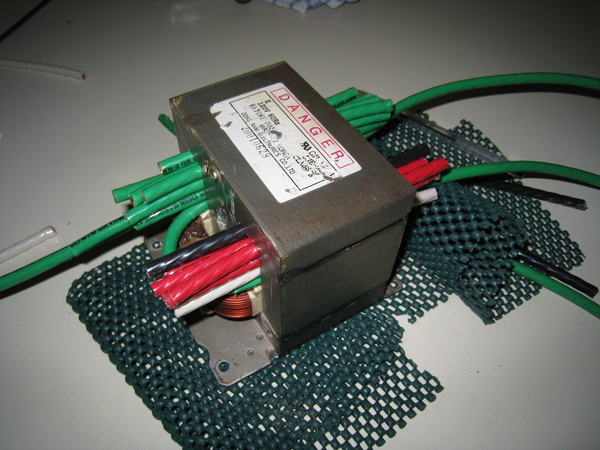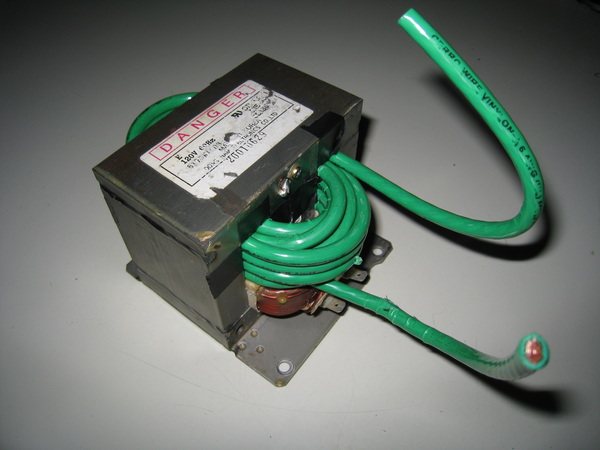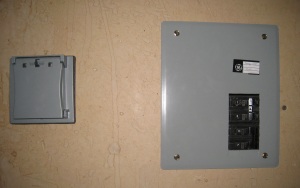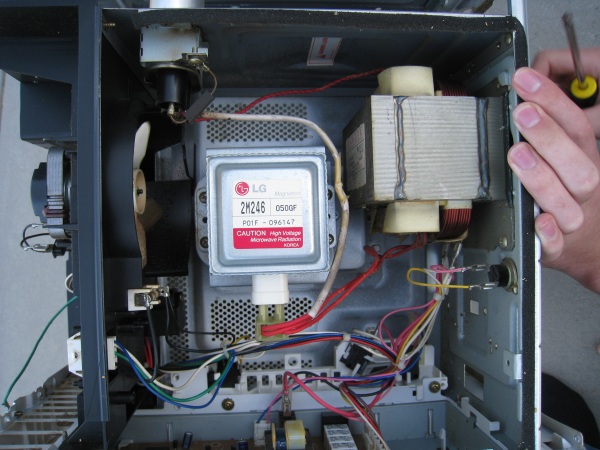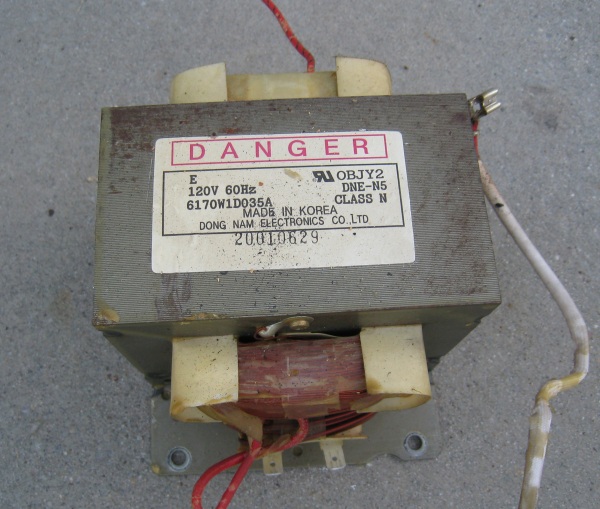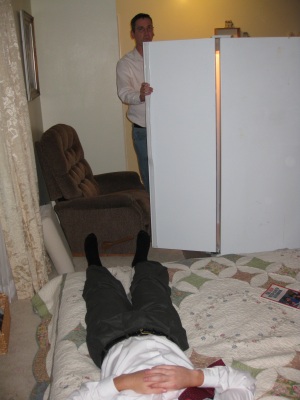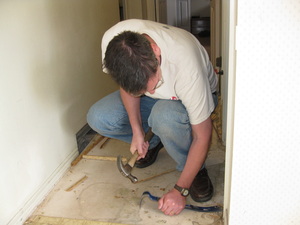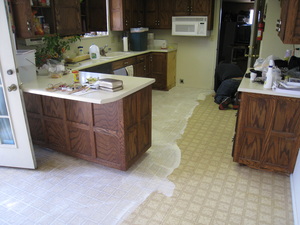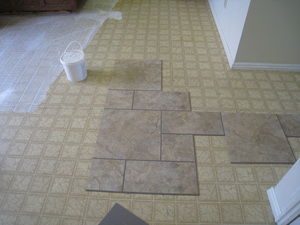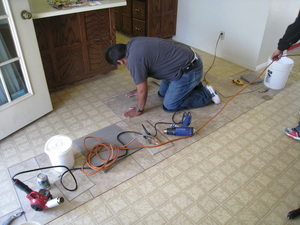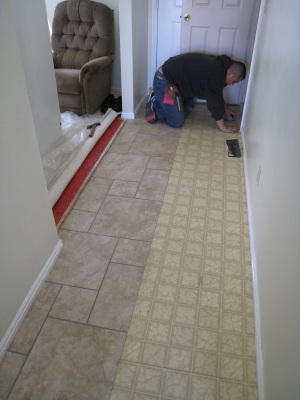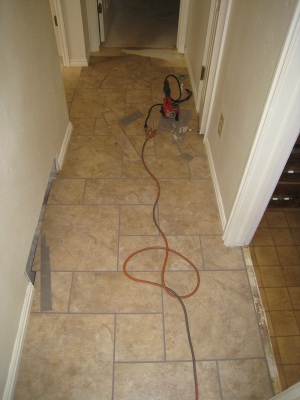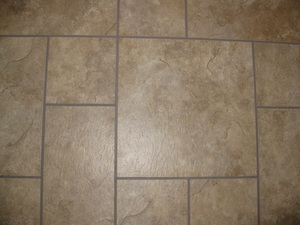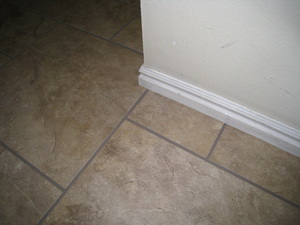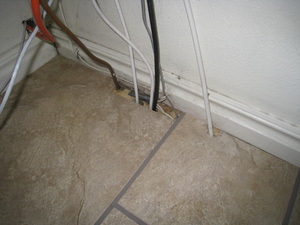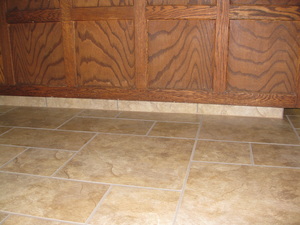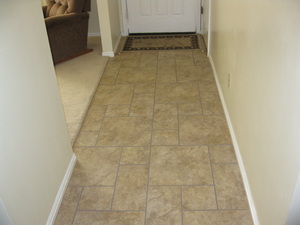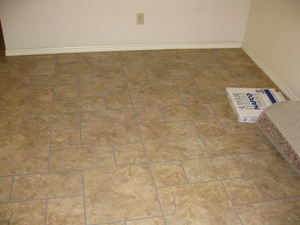This year’s Halloween nor’easter has started me thinking about how to heat my apartment if the power goes out for an extended period of time.
If the water and gas are still on, one possibility is to make a simple hydronic heating system using the water heater. The basic idea is to hook a hose to the hot water faucet, run it around a room, then to a drain.
As a proof of concept I picked up a faucet to garden hose adapter and some extra hose from Home Depot. After setting up the system I turned off the furnace and went to sleep.
Table of Results
| Time | Room °F | Flow Rate GPM | °F in | °F out | BTUs | Notes |
|---|---|---|---|---|---|---|
| 10:00 pm | 70.1 | 0.5 | 150 | 100 | 12,500 | Max. flow water heater can sustain |
| 10:23 pm | 76.8 | 0.2 | 150 | 100 | 5,000 | Reduced flow |
| 10:27 pm | 77.4 | 0.2 | 150 | 95 | 5,500 | |
| 10:57 pm | 79.3 | 0.2 | 150 | 95 | 5,500 | Too hot, opened window and door |
| 11:19 pm | 77.5 | 0.1 | 150 | 90 | 3,000 | Reduced flow, closed window and door |
| 04:30 am | 75.9 | 0.1 | 145 | 85 | 3,000 |
The system worked extremely well. I suspect it could easily heat two rooms.
Setup Details
Procure a dual thread for 3/4 inch hose or male 55/64 inch adapter, model number 37.0109.98, $5.95. Alternatively the hose could be attached directly to the washing machine faucet.
Questions?

